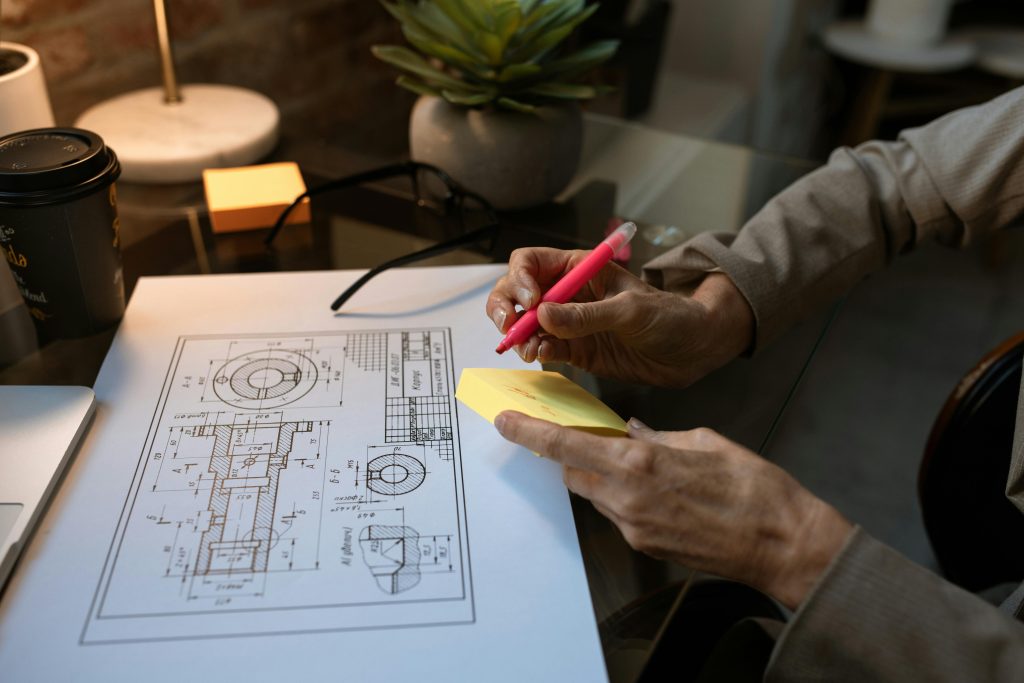You’re staring at a screen. Or maybe out a window. There’s a feeling, isn’t there? A quiet hum of dissatisfaction, a whisper that says, “There has to be more than this.” Maybe your bank account is a source of anxiety, not freedom. Perhaps you feel stuck in a job that doesn’t light you up, using skills that feel dusty and outdated. Or maybe it’s a deeper thing—a lack of belief that you’re actually capable of building the life you secretly dream about.
We’ve been sold a story. The story goes: go to school, get good grades, land a safe job, save for retirement, and then, at 65, you can finally start living. It’s a story that prioritizes security over passion, and conformity over confidence. And for millions, it’s a story that’s left them feeling empty, overwhelmed, and wondering, “Is this really it?”
Here’s the truth they don’t tell you: You are holding a blank page. Not a ruined one, not a page with irreparable mistakes. A blank page. And the power to write a new story—a story of wealth, of mastery, of unshakable self-belief—is sitting right there in your hands, waiting for the first word.
This isn’t about a magical “10x your income in 10 days” scheme. It’s not about hustling until you burn out. This is a fundamental reset. It’s about returning to the source code of your own life and rewriting the program, one deliberate line at a time. It’s about building from scratch, with intention, and creating a life that is truly, authentically yours.
Let’s walk through this together. We’ll start with the foundation of all freedom, then build the structure of mastery, and finally, furnish it with the deep, quiet confidence that comes from knowing you can handle anything.
Part 1: The Foundation – Building Real Wealth from Zero

When we hear “wealth,” we think of stacks of cash, luxury cars, and giant houses. That’s a mirage. Real wealth is simpler and far more powerful: it’s options. It’s the ability to say “no” to a toxic job, “yes” to a family emergency without financial panic, and “let’s go” to an opportunity that excites you. Building this from scratch requires a shift in mindset before you ever look at a dollar.
The Scarcity Trap vs. The Abundance Engine
Most of us operate from a Scarcity Mindset. It sounds like this: “There’s never enough.” “Money is hard to get.” “I don’t deserve it.” “I have to hold onto every penny.” This mindset creates fear, makes us risk-averse, and often leads to terrible financial decisions driven by panic.
The reset begins with adopting an Abundance Engine. This isn’t naive positivity. It’s a practical system built on two beliefs:
- Your potential to create value is infinite. Unlike a finite resource, your skills, ideas, and capacity to learn are boundless.
- Wealth is built by creating and channeling value, not just by pinching pennies.
The Engine has three parts: what comes in (Income), what stays (Savings), and what grows (Investments).
Step 1: The Inflow – Your First $1

You can’t save or invest what you don’t have. If you’re starting from zero or even debt, your first mission is to generate any amount of capital.
- The “Dumb” Job is Smart: Swallow your pride. A job in retail, bartending, or delivery services isn’t beneath you; it’s a temporary fuel injector for your engine. The goal isn’t prestige; it’s cash flow. Work 20 hours a week at a simple job to cover your bare-bones expenses. This takes the pressure off and stops the financial bleeding.
- Sell Your “Stuff” Storm: Go through your home. Old clothes, unused electronics, books, collectibles. This isn’t spring cleaning; it’s a capital-raising mission. Use Facebook Marketplace, eBay, or Poshmark. Turn your dormant assets into working capital. The goal is to get a starting lump sum—your “seed money.”
- Micro-Skilling for Micro-Gigs: Can you proofread? Do basic video editing? Create simple social media graphics? Offer your services on platforms like Fiverr or Upwork for a low rate. The goal isn’t to get rich; it’s to prove to yourself that you can trade a skill for money. This is a massive confidence booster.
Step 2: The Fortress – The Art of Defensive Finance
Now you have a trickle of money coming in. The single most important habit you will ever build is this: Pay Yourself First.
Before you pay the rent, before you buy groceries, you pay your future self. As soon as any money hits your account, you immediately move a predetermined percentage into a separate savings account that you do not touch. Start with 10%. If that’s impossible, start with 1%. Or $10. The amount is irrelevant; the ritual is everything.
This does two things:
- It builds your financial fortress—your emergency fund.
- It rewires your brain to see saving as a non-negotiable expense, not an afterthought.
Your Emergency Fund is Your “Screw You” Fund. The goal is to save 3-6 months of your bare-bones living expenses. This money is not for vacations or new sneakers. It’s your shield against life’s surprises. A car repair, a medical bill, or a terrible boss—when you have this fund, you face these challenges from a position of strength, not desperation. This is the bedrock of financial confidence.
Step 3: The Growth – Making Your Money Work for You
Once your emergency fund is solid, you stop just saving and start investing. This word terrifies people, but it’s simple: investing is just putting your money somewhere it can grow over time, outpacing inflation.
For the absolute beginner, forget about picking individual stocks. That’s gambling. Your best friend is the low-cost index fund. An index fund (like one that tracks the S&P 500) is simply a basket that holds little pieces of hundreds of top companies. When you buy a share of the fund, you own a tiny piece of all of them. You’re betting on the entire economy to grow over the long term, not on one company to be a miracle.
- How to Start: Open an account with a user-friendly platform like Vanguard, Fidelity, or Charles Schwab. Set up an automatic monthly transfer from your checking account into a broad market index fund. $50, $100, whatever you can. Set it and forget it. This is called “dollar-cost averaging,” and it’s the most powerful, stress-free way to build wealth over decades.
Wealth isn’t a lottery ticket; it’s a slow, steady tree you plant and water every single month.
Part 2: The Structure – Forging Skills That Make You Indispensable

With the financial panic starting to subside, we can focus on the real engine of long-term prosperity: your skills. Your ability to learn, adapt, and create value is the single greatest asset you will ever own. In a world that’s changing fast, being a learner is the ultimate superpower.
The “T-Shaped” Person: Why Specializing is Your Superpower
The most valuable people in the modern economy are “T-shaped.”
- The vertical bar on the T is your deep area of expertise. This is the thing you are known for. The go-to person.
- The horizontal bar is your broad understanding of related fields. You can communicate, collaborate, and see the big picture.
Trying to be good at everything makes you master of none. The reset involves choosing one, single, vertical skill to master first.
How to Choose Your First “Weaponized” Skill
Don’t just pick something random. Ask:
- What comes naturally to me? What do people sometimes compliment me on?
- What is the world willing to pay for? Look at job boards. Is it digital marketing? Data analysis? Coding? UX design? Project management?
- What would I enjoy getting better at? You don’t have to be passionately in love with it, but you can’t hate it. Mastery requires thousands of hours; mild interest won’t cut it.
Examples of High-Value, Learnable Skills:
- Digital Skills: Search Engine Optimization (SEO), Copywriting, Data Analysis (with Excel, then SQL), Web Development, UX/UI Design, Social Media Advertising.
- “Soft” Skills (that are actually hard): Project Management, Public Speaking, Sales, Negotiation, Copywriting.
The 1-Hour-a-Day Doctrine: The Compound Effect of Learning
You don’t need to quit your job and go back to school. You need one focused hour a day.
- 8:00 PM – 9:00 PM is your “Do Not Disturb” time. This is sacred.
- For the first 6 months, you dedicate this hour solely to learning your one chosen skill.
- Use free and cheap resources: YouTube tutorials, Coursera courses, freeCodeCamp, articles, and books.
- Learn by Doing: Don’t just passively watch videos. If you’re learning web design, build a fake website for a fake company. If you’re learning SEO, start a free blog on a topic you love and try to rank it. If you’re learning data analysis, find a free dataset online and see what stories you can pull from it.
This one hour, compounded over a year, is 365 hours of focused practice. You will go from knowing nothing to being more knowledgeable than 95% of the population on that topic.
From Learning to Earning: The Bridge of Proof
Knowledge trapped in your head is useless. You need to externalize it to build credibility.
- Create a “Proof of Work” Portfolio: This is your new resume. It’s not a list of jobs; it’s a collection of what you’ve done. Your fake company website, your blog posts, your analysis of a public dataset. This portfolio is tangible proof that you can execute.
- The “Free to Paid” Leap: Offer your service for free or at a massive discount to one or two initial “clients.” This could be a friend’s small business, a local non-profit, or someone you find online. Your goal is to get a real-world case study and a testimonial.
- Raise Your Rates: With one success under your belt, you now have a case study. You can now confidently charge a low-but-professional rate. Then another. Then another. Each project makes you better and adds to your portfolio, justifying your next rate increase.
This process transforms you from “someone who wants to do X” to “the person who does X.” It’s how you build a career from scratch, on your own terms.
Part 3: The Furnishings – Cultivating Unshakable Confidence

You can have a fat bank account and a killer skillset, but if you don’t have the confidence to use them, to put yourself out there, to take a calculated risk, it’s all for nothing. Confidence isn’t something you’re born with; it’s a reliable result of a specific process. It’s the final, crucial piece of the reset.
The “Fake It Till You Make It” Fallacy
This is terrible advice. Your brain knows you’re faking it. The anxiety of being “found out” is paralyzing. True confidence doesn’t come from pretending; it comes from evidence.
The Confidence-Evidence Feedback Loop
Confidence is built one small, proven victory at a time. It’s a loop:
Action → Evidence → Confidence → Bigger Action
You don’t start by trying to speak confidently in a boardroom. You start by setting a tiny, achievable goal and crushing it.
The “Win Log”: Your Anti-Imposter Syndrome Weapon
Start a document—a notebook, a note on your phone—called your “Win Log.” Every single day, you write down at least one tiny win.
- Monday: “I stuck to my budget and made coffee at home.”
- Tuesday: “I did my 1-hour learning session even though I was tired.”
- Wednesday: “I finally made that dentist appointment I’ve been avoiding.”
- Thursday: “I finished the first draft of my project.”
- Friday: “I had a difficult conversation with a friend and was honest.”
This seems trivial, but it’s revolutionary. You are actively collecting data that proves you are a competent, reliable person who keeps promises to yourself. When imposter syndrome whispers, “You’re a fraud,” you can open your Win Log and see, in cold, hard data, that you are not.
Embracing the “Beginner’s Mind”
Confident people aren’t afraid to look stupid. They have a “Beginner’s Mind”—they are open, curious, and eager to learn, not concerned with protecting a fragile ego. Give yourself permission to be bad at things. Tell people, “I’m new to this, so bear with me.” This removes the crushing pressure to be perfect and opens the door to rapid growth. Every expert was once a beginner who refused to quit.
The Physical Foundation: Sleep, Move, Eat
You are a biological system. You cannot have mental and emotional confidence if your physical foundation is crumbling.
- Sleep: This is non-negotiable. Prioritize 7-9 hours of quality sleep. It is the foundation of willpower, cognitive function, and emotional resilience. A tired brain is an anxious, scared brain.
- Move: You don’t need a grueling gym routine. Walk for 30 minutes a day. Do some bodyweight exercises. Movement reduces stress hormones (cortisol) and increases feel-good endorphins. It tells your body you are strong and capable.
- Eat (mostly) real food: Fuel your system with vegetables, proteins, and whole foods. When you eat like someone who respects themselves, you start to believe you are someone who deserves respect.
The Tapestry: Weaving It All Together

We’ve talked about wealth, skills, and confidence as separate pillars, but they are deeply intertwined threads in the tapestry of your new life.
- Your financial stability (wealth) reduces the background anxiety that kills creativity and risk-taking. It gives you the space to learn and build skills.
- Your valuable skills (mastery) are the engine that generates more wealth and, more importantly, gives you a deep sense of self-worth and capability. This is a huge source of confidence.
- Your growing confidence gives you the courage to ask for a raise, to launch a side project, to negotiate a better deal, to invest in yourself—actions that directly increase your wealth and sharpen your skills.
The reset isn’t a linear process. It’s a flywheel. You push on one part, and it starts to make the others spin a little easier.
Your First Step: The 1% Shift
Looking at all of this can feel overwhelming. Don’t try to do it all at once. The entire philosophy of a reset is built on the power of small, consistent actions.
Tomorrow morning, do one thing.
- Transfer $5 into a new savings account.
- Watch one 10-minute tutorial on a skill you’re curious about.
- Go for a 15-minute walk and write down one “win” from yesterday.
That’s it. That’s your first word on the blank page.
The life you want isn’t a distant destination you arrive at one day. It’s a landscape you build, brick by brick, habit by habit, with every single choice you make. The materials are all around you. The time is now. Your blank page is waiting.
What will you write on it?






